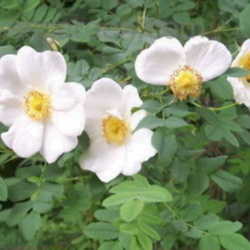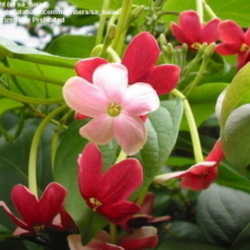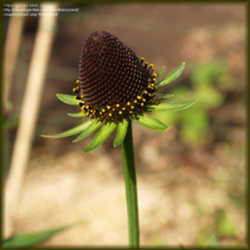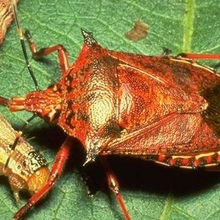(Editor's Note: This article was originally published on May 3, 2009. Your comments are welcome, but please be aware that authors of previously published articles may not be able to promptly respond to new questions or comments.)
It is my opinion that perennials are the best flowers for the flower beds around my home. Perennials are simply the easiest plants to care for. Every gardener can have colorful, multi-season blooms when perennials are planted. Follow the tips below for a successful perennial garden. The photo at the top is a close up of giant scabious (Cephalaria gigantea) and is courtesy of Dave's Garden member, 'poppysue.'
Keys to Success - Spring & Summer
Winter Bed Care
- Cut back all plants in late fall as soon as they begin to fade
- Cultivate beds, being careful not to disturb or injure root system
- Mulch beds well for their winter rest period
Choosing Plants for the Cutting Garden
When making plant choices, consider the end result. Carefully research the needs of each plant such as; water, light, soil conditions and fertilization rates. This will allow similar plants to be grouped together for ease of care.
You will also want to look at mature size, bloom type and color. Does the plant produce single or double blooms? Do the blooms ‘weep' like the racemes of wisteria or do they stand upright? A mix of various size plants and bloom types are optimal for the cutting garden. This will allow for a different bouquet every week. 

Monarda bartlettii by Dave's
Garden member 'htop' Aster amellus by Dave's
Garden member 'Philomel'
Characteristics to Consider
- Mature size of plant
- Long or short stems
- Bloom type, color and size
Plants to Consider
Alpine Columbine (Aquilegia alpina) Height: 12 to 18 inches. Grow in full sun to partial shade in zones 4a to 7b. Blooms are medium blue from late spring to early summer.
Bartlett's Beebalm (Monarda bartlettii) Height: 18 to 24 inches. Grow in full sun to partial shade in zones 8a to 9b. Blooms are pink-purple from mid spring to mid summer.
Giant Leopard's Bane (Doronicum pardalianches) Height: 36 to 48 inches. Grow in full sun to light shade in zones 4a to 8b. Blooms are gold/yellow-orange to bright yellow from late spring to early summer.
Giant Scabious (Cephalaria gigantea) Height: 6 to 8 inches. Grow in full sun to partial shade in zones 3a to 9b. Blooms are bright yellow from late spring to early summer.
Italian Aster (Aster amellus) 'Violet Queen' Height: 24 to 36 inches. Grow in full sun to partial shade in zones 5a to 8b. Blooms are violet-lavender from late summer to early winter.
Largest Masterwort (Astrantia maxima) Height: 18 to 24 inches. Grow in full sun to partial shade in zones 5a to 9b. Blooms are pale pink to pink from late spring to mid summer (blooms repeatedly.
Mountain Lily (Alstroemeria exerens) Height: 6 to 12 inches. Grow in full sun to partial shade in zones 6a to 9b. Blooms are pale pink, pink, rose and mauve from late spring through early fall.
Subalpine Fleabane (Erigeron peregrinus) Height: 6 to 12 inches. Grow in full sun to partial shade in zones 3a - 8b. Blooms are violet-lavender from late spring to mid summer.
There are many other perennial plants which can be added to the cutting garden. Why not spend Saturday wandering around the nurseries in your area to see what is available? While
choosing plants, remember to add some for fill-in plants or greenery. One plant to consider for this purpose is baby's breath. 
Gypsophila paniculata by Dave's
Garden member 'haighr'
Baby's Breath (Gypsophila paniculata) Height: 24-36 inches. Grow in full sun to partial shade in zones 3a to 10b. Blooms are white in mid-summer.
Grow your own cutting garden filled with easy care perennials for fewer trips to the local floral shop.
Happy Gardening
Sources:
Plant characteristics and care tips are a condensed version of what is found in Dave's Garden PlantFiles. Please visit PlantFiles for more information and great member photographs.
Photos:
All photos are by Dave's Garden members and are credited above.

















